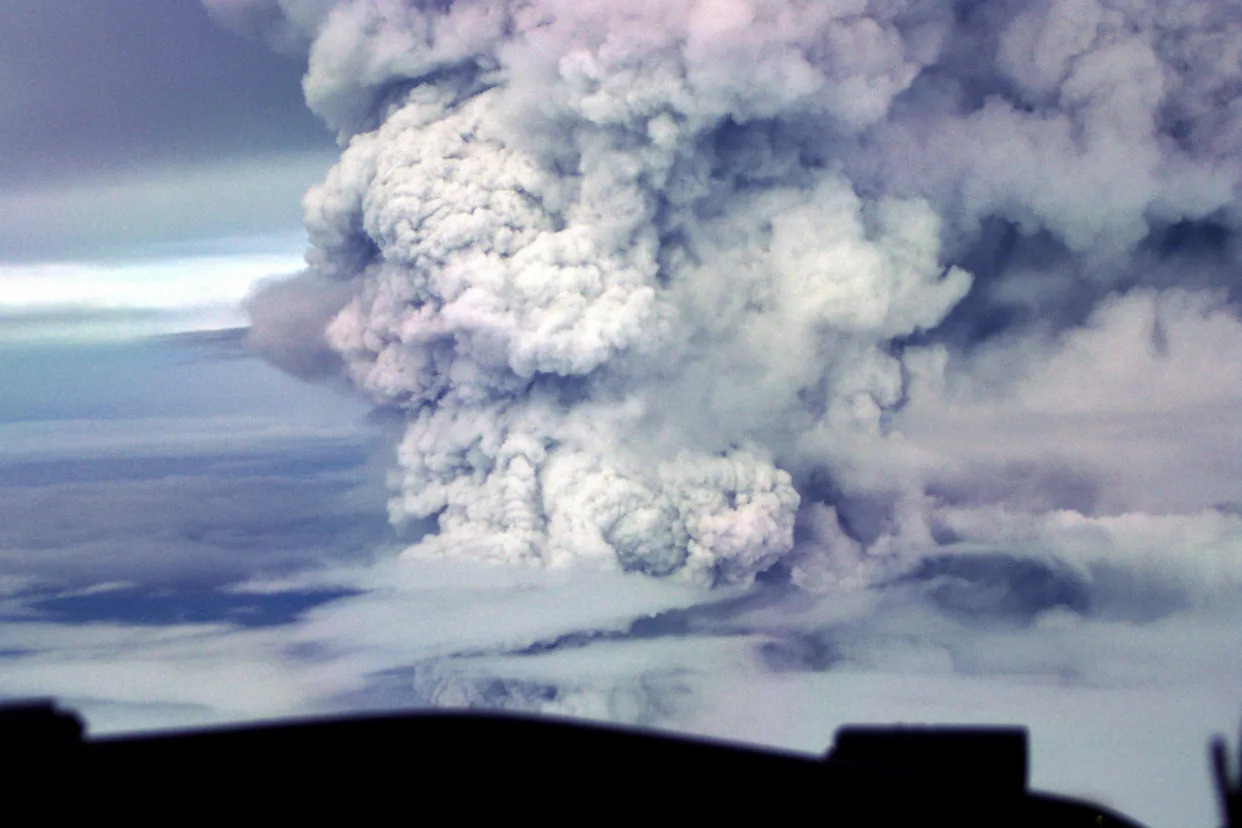ROD McGUIRK
Mon, November 20, 2023

A cloud of volcanic ash and steam rises as Mount Ulawun erupts, seen from 30,000 feet in the air, on April 30, 2001. Authorities have downgraded the alert level for Papua New Guinea's tallest volcano, Tuesday, Nov. 21, 2023 and ruled out a tsunami a day after it erupted, spewing smoke as high as 15,000 meters (50,000 feet).
CANBERRA, Australia (AP) — Papua New Guinea’s tallest volcano had its alert level reduced Tuesday and a tsunami was ruled out one day after Mount Ulawun erupted, spewing smoke as high as 15 kilometers (50,000 feet) into the sky.
One of the South Pacific nation’s most active volcanoes, Ulawun erupted on Monday afternoon, placing regional neighbors, including Japan temporarily, on tsunami alert.
The alert level for the volcano on the northeastern island of New Britain was downgraded by Papua New Guinea’s Geohazards Management Division to Stage 3, which means a “moderate-to-strong eruption.” The division rated the tsunami risk in a bulletin at “nil.”
The organization had on Monday elevated it to Stage 4 which in Papua New Guinea’s four-tier scale indicates a “very strong eruption.”
But the volcano, which stands 2,334 meters (7,657 feet) above sea level, remained active and the eruption could continue indefinitely, the division said.
The Volcanic Ash Advisory Center in Darwin, Australia, reported volcanic smoke rising as high as 15,000 meters (50,000 feet) on Monday.
The division reported the ash plume rising at least 5,000 meters (16,000 feet) on Tuesday before becoming lost in atmospheric cloud.
The division said airborne ash could travel long distances and effect aviation services. A thick ash cloud extended tens of kilometers (miles) to the northwest of the volcano.
The Civil Aviation Safety Authority, the nation’s industry regulator, did not immediately respond to an email asking if air travel was being effected.
The nearest large town is Bialla, which is established among oil palm plantations on Ulawun’s slopes 47 kilometers (29 miles) to the southwest, the division said. Hargy Oil Palm Ltd., a company based in Bialla, did not immediately respond to an email request for comment.
The division said heavy coatings of black ash were causing leaves to droop in oil palm plantations near the volcano and were as accumulating on roofs.
A resident of the provincial capital of Kimbe, about 200 kilometers (124 miles) further west, said on Tuesday she was unaware of the eruption because of the distance.
Papua New Guinea sits on the Pacific “Ring of Fire,” the arc of seismic faults around the Pacific Ocean where much of the world’s earthquake and volcanic activity occurs. Ulawun has repeatedly erupted since 1700s, and had a last major eruption in 2019 when more than 5,000 people were evacuated.
The division said there we no known casualties from Ulawun’s history of eruptions.
But major impacts in terms of population displacement, infrastructure damage and disruption to services were common, the division said.
No comments:
Post a Comment